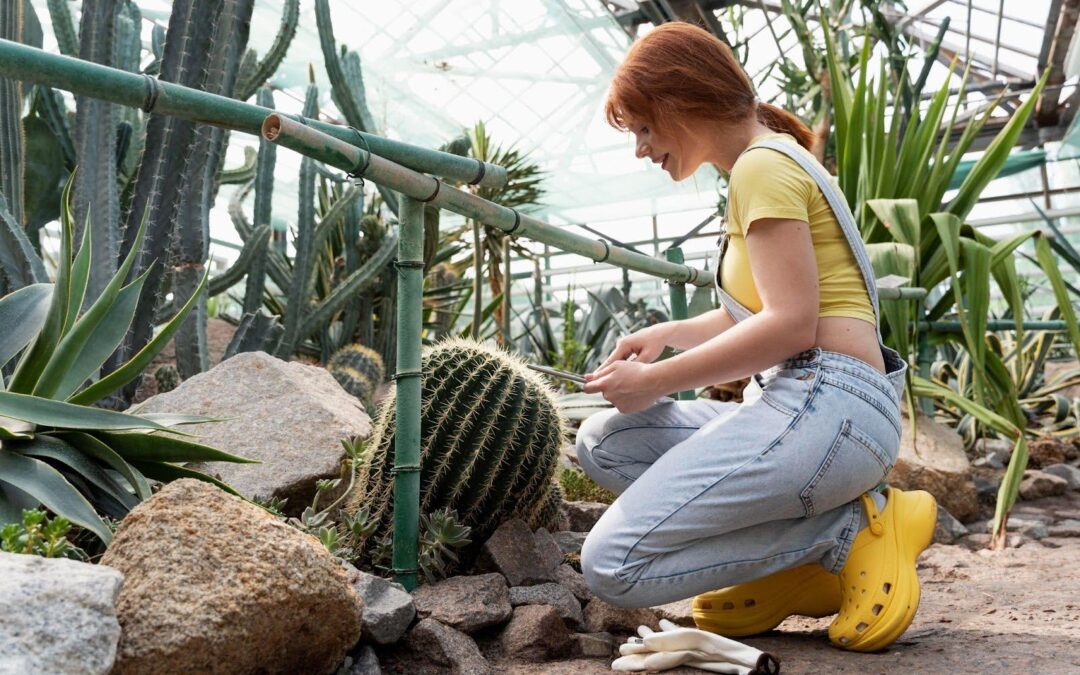In the Lower Mainland, where weather patterns can be unpredictable, and water conservation is becoming increasingly important, we focus on creating landscapes that are not only beautiful but also sustainable. Understanding how to use water in your garden and landscape effectively can significantly impact your environmental footprint and help maintain your garden’s health and vibrancy throughout the year.
Water-efficient landscaping involves a combination of smart planning, appropriate plant selection, and innovative irrigation solutions. By integrating these elements, we help you create a thriving garden while minimizing water wastage. This approach not only supports the local ecosystem but also reduces the need for frequent maintenance, ultimately saving you time and money in the long run.
Our goal is to ensure that every element of your landscaping works harmoniously to achieve optimal water efficiency. Whether you are contemplating a new garden project or looking to revamp your existing outdoor space, incorporating water-efficient practices is key to achieving a resilient and appealing landscape. Join us as we delve deeper into the principles of water-efficient landscaping and how they can be applied to homes in the Lower Mainland.
Understanding the Basics of Water-Efficient Landscaping
When we talk about water-efficient landscaping, we are focusing on creating a space that uses water judiciously while maintaining its aesthetic and functional value. This type of landscaping, often referred to as xeriscaping, incorporates various practices that reduce the need for supplemental water from irrigation. One of the key aspects is designing a landscape that naturally fits with the local climate and soil conditions, minimizing water loss due to evaporation and runoff.
We start by analyzing the layout of your land, paying close attention to natural slopes, existing vegetation, and sun exposure. These elements play a crucial role in determining the most effective layout for your garden that supports water efficiency. By strategically placing plants with similar water needs together and creating zones within the garden, we maximize irrigation efficiency and minimize waste. The choice of mulches and ground covers also plays a significant role in retaining soil moisture and reducing water requirements.
Choosing the Right Plants for Water Conservation
Selecting appropriate plants is pivotal in establishing a water-efficient garden. We recommend native or drought-tolerant plants that are well-adapted to the Lower Mainland’s climate, requiring less water, pesticides, and fertilizers. These plants not only thrive with minimal irrigation but also provide habitats for local wildlife, contributing to biodiversity.
We carefully assess your garden’s specific conditions, such as soil type and sunlight availability, to choose plants that will flourish in your unique environment. Grasses like fescue or buffalo grass are excellent for dry conditions and require little watering once established. Similarly, perennials such as lavender, sage, and yarrow not only add vibrant colours and textures to your landscape but are also renowned for their low water needs. Our approach ensures that each plant selected is poised to contribute to the overall hydration efficiency of your garden, reducing the need for frequent watering and maintenance.
Innovative Irrigation Techniques to Save Water
In our efforts to promote water efficiency, we integrate innovative irrigation techniques that ensure water is used sparingly and wisely. One key method is the use of drip irrigation systems, which deliver water directly to the base of the plants. This technique minimizes evaporation and runoff, making sure that water goes exactly where it’s needed — to the roots. By using a drip system, we can significantly reduce water usage compared to traditional sprinkler systems, which often use wastewater through overspray and evaporation.
Another technique we employ is the installation of smart irrigation controllers. These devices automatically adjust watering schedules based on weather conditions and soil moisture levels. By relying on real-time data, these controllers prevent watering when it’s not needed, such as during rainy days or cooler periods, hence conserving a substantial amount of water. Together, these techniques not only keep your garden thriving but also contribute to significant water savings.
Maintaining Your Landscape for Long-Term Efficiency
Long-term maintenance is crucial to keeping your water-efficient landscape functioning properly. Regular checks and upkeep of irrigation systems ensure they operate at peak efficiency, preventing water wastage due to leaks or misalignment. We advise on seasonal adjustments to your irrigation schedules, reflecting changing weather patterns, to optimize water use throughout the year.
Moreover, we encourage the practice of organic mulching, which helps retain soil moisture and reduces the need for watering. Applying a proper layer of mulch prevents rapid evaporation and keeps your plants’ roots cool, decreasing their overall water needs. Regular pruning and weeding also improve the health and vitality of your plants, making them more resilient and better able to utilize the water they receive.
Conclusion
At All Hands on Deck, we are dedicated to helping you craft a landscape that is not only visually stunning but also environmentally sustainable. By implementing water-efficient landscaping techniques and innovative irrigation systems tailored to your specific needs, we help you conserve water and nurture a beautiful garden that complements the Lower Mainland’s unique climate.
If you’re looking to transform your outdoor spaces into sustainable and low-maintenance areas, contact us at All Hands on Deck. Let us assist you in developing a water-efficient landscape strategy that saves water, time, and money while enhancing the beauty and functionality of your home with our backyard renovation services.



Recent Comments